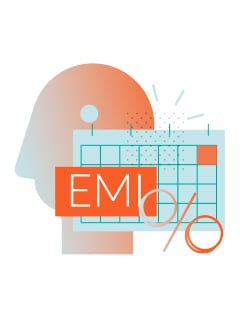CKYC Registry
-
Customer Service Contact us Service request Locate a branch
Find all the help you need
Scan the QR, get our app, and find help on your fingertips

Help CenterSupport topics, Contact us, FAQs and more
-
Login
Are you ready for an upgrade?
Login to the new experience with best features and services
-
Login
Are you ready for an upgrade?
Login to the new experience with best features and services
- Accounts
-
Deposits
IDFC FIRST Bank Deposits
View all Deposits -
Loans
IDFC FIRST Bank Loans
View all Loans - Wealth & Insure
-
Payments
IDFC FIRST Bank Payments
View all Payments -
Cards
IDFC FIRST Bank Cards
View all Cards - Blogs
- Corporate Account
-
Cash Management Services
IDFC FIRST Bank Cash Management Services
View all Cash Management Services - Supply Chain Finance
-
Corporate Lending
IDFC FIRST Bank Lending
View all -
Treasury
IDFC FIRST Bank Treasury
See more details - NBFC Financing
Support topics, Contact us, FAQs and more
- IDFC FIRST Bank Accounts
-
Savings Account
-
Corporate Salary
Account -
Senior Citizens
Savings Account -
First Power
Account -
Current Account
-
NRI Savings
Account -
TASC Institutional
Account -
Savings Account
Interest Calculator
- IDFC FIRST Bank Deposits
-
Fixed Deposit
-
Recurring Deposit
-
NRI Fixed Deposit
-
Safe Deposit Locker
-
FD Calculator
-
RD Calculator
- IDFC FIRST Bank Loans
-
Personal Loan
-
Consumer Durable
Loan -
Home Loan
-
Business Loan
-
Professional Loan
-
Education Loan
-
New Car Loan
-
Pre-owned Car Loan
-
Two Wheeler Loan
-
Pre-owned Two
Wheeler Loan -
Commercial Vehicle
Loan -
Gold Loan
-
Loan Against Property
-
Loan Against Securities
-
Easy Buy EMI card
-
Personal Loan
EMI Calculator -
Education Loan
EMI Calculator -
Home Loan
EMI Calculator
- IDFC FIRST Bank Wealth & Insure
-
FIRST Select
-
FIRST Wealth
-
FIRST Private
-
Mutual Funds
-
Sovereign Gold Bond
-
Demat Account
-
Term Insurance
-
Life Insurance
-
Health Insurance
-
General Insurance
-
Bonds
-
Loan Against
Securities -
Portfolio Management
Service
- IDFC FIRST Bank Payments
-
FASTag
-
Credit Card
Bill Payments -
UPI
-
Funds Transfer
-
Forex Services
-
Pay Loan EMI
- IDFC FIRST Bank Cards
-
Ashva :
Metal Credit Card -
Mayura :
Metal Credit Card -
FIRST Millennia
Credit Card -
FIRST Classic
Credit Card -
FIRST Select
Credit Card -
FIRST Wealth
Credit Card -
FIRST WOW!
Credit Card -
Deals
-
Debit Cards
-
Co-branded Cards
-
Credit Card
EMI Calculator -
FIRST Corporate
Credit Card -
FIRST Purchase
Credit Card -
FIRST Business
Credit Card
- Premium Metal Credit Cards
-
AshvaLifestyle1% Forex₹2,999
-
MayuraLifestyleZero Forex₹5,999
-
FIRST PrivateInvite Only
- Best for travellers
-
MayuraZero ForexMetal₹5,999
-
Ashva1% ForexMetal₹2,999
-
FIRST WOW!Zero ForexTravelLifetime Free
-
FIRST SWYPTravel OffersEMI₹499
-
FIRST Select1.99% ForexLifestyleLifetime Free
-
FIRST Wealth1.5% ForexLifestyleLifetime Free
-
Club VistaraTravelLifestyle₹4,999
-
IndiGo IDFC FIRST Dual Credit CardTravelLifestyle₹4,999
- Max benefits, Free for life
-
FIRST Classic10X RewardsShoppingNever Expiring Rewards
-
FIRST Millennia10X RewardsShoppingNever Expiring Rewards
-
FIRST Select10X RewardsLifestyle1.99% Forex
-
FIRST Wealth10X RewardsLifestyle1.5% Forex
-
FIRST WOW!RewardsTravelZero Forex
-
LIC ClassicRewardsInsuranceShopping
-
LIC SelectRewardsInsuranceShopping
- Reward Multipliers
-
AshvaLifestyleMetal₹2,999
-
MayuraLifestyleZero Forex₹5,999
-
FIRST ClassicNever Expiring RewardsShoppingLifetime Free
-
FIRST MillenniaNever Expiring RewardsShoppingLifetime Free
-
FIRST SelectNever Expiring RewardsLifestyleLifetime Free
-
FIRST WealthNever Expiring RewardsLifestyleLifetime Free
- Rewards & Credit on UPI
-
FIRST Power+FuelUPI₹499
-
FIRST PowerFuelUPI₹199
-
FIRST EA₹NVirtual1% Cashback₹499
-
FIRST DigitalVirtualUPI₹199
-
IndiGo IDFC FIRST Dual Credit CardUPITravelDual cards
- Fuel and Savings
-
FIRST PowerRewardsUPI₹199
-
FIRST Power+RewardsUPI₹499
-
LIC ClassicRewardsInsuranceShopping
-
LIC SelectRewardsInsuranceShopping
- Express and Flaunt
-
AshvaMetal1% Forex₹2,999
-
MayuraMetalZero Forex₹5,999
-
FIRST SWYPEMIOfferMAX₹499
-
FIRST MillenniaRewardsShoppingLifetime Free
- FD Backed rewarding Credit Cards for all
-
FIRST EA₹NVirtualCashback₹499
-
FIRST WOW!Zero ForexTravelLifetime Free
-
CreditPro Balance TransferTransfer & SaveReduce InterestPay Smartly
- IDFC FIRST Bank NRI Forex Solutions
-
Send money to India-Wire transfer
-
Send money to India-Digitally
-
Send money abroad
-
Max Returns FD (INR)
- IDFC FIRST Bank MSME Accounts
-
Platinum Current
Account -
Gold
Current Account -
Silver Plus
Current Account -
Merchant Multiplier
Account -
Agri Multiplier
Account -
TASC Institutional
Account -
Dynamic Current
Account -
World business
Account -
First Startup
Current Account
- IDFC FIRST Bank Business Loans
-
Business Loan
-
Professional Loan
-
Loan Against Property
-
Business Loan for Women
-
Working Capital Loan
-
Construction Equipment Loan
-
Machinery Loan
-
Healthcare Equipment Loan
- IDFC FIRST Bank Business Solutions
-
Payment Solutions
-
Tax Payments
-
Doorstep Banking
-
Point of Sale (POS)
-
Escrow Accounts
-
NACH
-
Payment Gateway
-
UPI
-
Virtual Accounts
-
As per amendment in the Income Tax Rules, PAN or Aadhaar are to be mandatorily quoted for cash deposit or withdrawal aggregating to Rupees twenty lakhs or more in a FY. Please update your PAN or Aadhaar. Kindly reach out to the Bank’s contact center on 1800 10 888 or visit the nearest IDFC FIRST Bank branch for further queries.
-
-
Most Searched
Sorry!
We couldn’t find ‘’ in our website
Here is what you can do :
- Try checking the spelling and search
- Search from below suggestions instead
- Widen your search & try a more generic keyword
Suggested
Get a Credit Card
Enjoy Zero Charges on All Commonly Used Savings Account Services
Open Account Now
Three years ago, Ram and Sita, a newly married couple, bought a new house in one of Mumbai's suburbs. It was their dream to own a home in a metro city, and as such, they always paid their EMIs on time. They even budgeted their finances to ensure they didn't miss an EMI payment. They didn't mind doing it, because for them owning a house was very important. But one day, they happened to see an advertisement to switch home loans to a lower rate of interest; they were intrigued. After all, it could help them reduce their EMIs and would help repay the loan earlier.
Today, various banks and financial institutions are eager to attract customers with new updated offers and schemes. And as a home loan borrower, it makes financial sense to grab the best opportunities, especially if the loan offer you are considering is better than the one you currently have. So understanding the whole procedure is necessary for you to reduce EMI costs while saving more in the long run.
As the banking sector grows, it has become extremely competitive, as banks and financial institutions have their own directives for customers looking to switch home loans. If you are not familiar with such rules and policies, you may end up with expenses and charges that you hadn't previously considered. For instance, your existing bank may charge you penalties for switching to another bank, while the new bank may charge you processing fees. IDFC FIRST Bank maintains complete transparency in its terms and conditions, be it for a new home loan or in case of a home loan transfer.
Before jumping into this process, there are some things you should know.
When should you consider switching banks?
The proper time to switch banks is when the interest rate is lower on a particular offer than your existing home loan. To ensure it is a financially smart move, remember the interest rate should be lower by at least 1.75% or 2%, and the tenure left for your existing loan to end should be longer. This will result in a significant reduction in your EMI.
The whole switching process can be elaborated as a ten-step process:
Step 1: Apply to the New Bank
Speak to the bank where you want to transfer your home loan. Get all the relevant information about the charges involved in the process, and only then apply.
Step 2: Submit Details of the Present Loan
Next, you need to submit all the necessary documents such as income, identity and address proof and details of your current home loan.
READ MORE
Step 3: Receive a Sanction Letter From The New Bank
Once the new bank evaluates your documents, you will receive a sanction letter, if the bank deems it appropriate. The process may vary depending on the bank. IDFC FIRST Bank FASTTRACK balance transfer facility is a convenient way of home loan transfer.
Step 4: Apply for the First Set of Documents with Your Current Bank
After receiving your sanction letter, apply for your first set of documents to your current bank and loan account statement too. These are needed to be submitted to your new bank.
Step 5: Get a NOC From The Current Bank
Speak with your current bank to receive a No Objection Certificate (NOC). This letter will contain information regarding your loan - the total sum of the loan, the amount outstanding and also if there are any pre-payment charges.
Step 6: Submit Necessary Agreement Documents to The New Bank
After receiving the NOC, submit all the required property-related documents to your new bank, such as the registered agreement paper.
Step 7: Evaluation of The Property by The New Bank
This is a critical phase of the process. Your new bank will evaluate your housing property, and you may have to submit the property papers for legal verification and valuation of the property. This process could take up to a few weeks. IDFC First Bank FASTTRACK facility aims for faster addressal to ensure a better customer experience.
Step 8: The New Bank Will Issue a Cheque in The Name of The Current Bank
Once the above process is completed, and the new bank is fully convinced regarding the property and all legal documents, it will issue a cheque with the outstanding amount of the home loan in the name of the current bank.
Step 9: Closure of the Existing Loan by The Current Bank
On receiving the cheque, the current bank will close your loan. After one or two weeks, you will be handed the original documents of your home loan. You can then submit these documents to the new bank.
Step 10: Signing the Loan Agreement with The New Bank
Now that you have your existing loan account closed with the old bank, you can proceed towards signing the loan agreement with your new bank by submitting your original documents related to the loan agreement.
Bank charges when switching banks
1. Penalties
They are also known as switch overcharges and balance transfer charges. While switching banks, the existing bank may ask you to pay the penalty, which is calculated on the outstanding loan amount.
2. Processing Fees
The bank charges a fee for the processing exercise that involves activities like loan application, verifying information, subsequent paperwork etc.
3. Pre-payment Charges and Mortgage Registration Charges
You may be charged with pre-payment or foreclosure charges as you foreclose on the old home loan. Also, it can be helpful to check if mortgage registration charges are included in your initial home loan transfer expenses.
After considering these aspects, we hope that you can plan and execute your home loan balance transfer in a way that maximises your savings and financial benefits.
Disclaimer
The contents of this article/infographic/picture/video are meant solely for information purposes. The contents are generic in nature and for informational purposes only. It is not a substitute for specific advice in your own circumstances. The information is subject to updation, completion, revision, verification and amendment and the same may change materially. The information is not intended for distribution or use by any person in any jurisdiction where such distribution or use would be contrary to law or regulation or would subject IDFC FIRST Bank or its affiliates to any licensing or registration requirements. IDFC FIRST Bank shall not be responsible for any direct/indirect loss or liability incurred by the reader for taking any financial decisions based on the contents and information mentioned. Please consult your financial advisor before making any financial decision.
The features, benefits and offers mentioned in the article are applicable as on the day of publication of this blog and is subject to change without notice. The contents herein are also subject to other product specific terms and conditions and any third party terms and conditions, as applicable. Please refer our website www.idfcfirstbank.com for latest updates.























